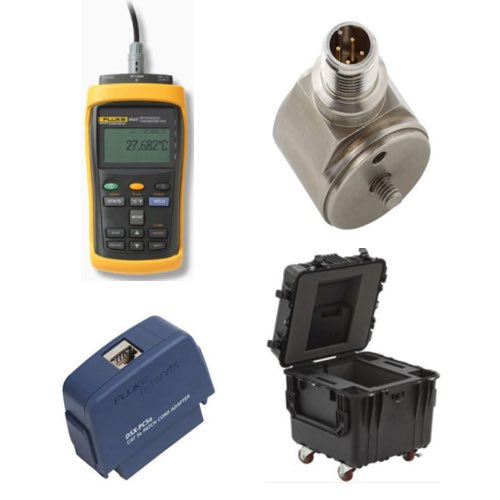Instrumentation Accessories

Accessories for instrumentation are a vital part of measuring devices, serving as the main supports and enhancers of not only the measuring instruments themselves but also of their individual performances, accuracies, and reliabilities. Some of the types of accessories include the following: mounting hardware and connectors; calibration tools; enclosures; manifolds; tubing and fittings; and other items that support measurements in a diverse array of environments and conditions.
The safe and easy installation of devices in control rooms, field installations, or hazardous areas depends on using the right accessories for the job, such as installation panels and mounting brackets. Protecting sensitive instruments from the environment is equally important. Enclosures keep devices safe from dust, moisture, and wild temperature swings. Inside that enclosure, the instrument is safe, and the instrument's long-term reliability is assured. Calibration tools and standards make it possible for operators to verify the instrument's ongoing accuracy. They're necessary for maintaining compliance with industry regulations. When the instrument is in calibration, it is performing optimally.
More Information about Instrumentation Accessories
Calibration instruments ensure that instruments maintain their accuracy over time, complying with industry standards and regulations. Calibration accessories may include reference thermometers, electrical calibrators, and pressure calibrators, each tailored to the specific calibration needs of different Fluke devices.
For professionals working in environments where electrical measurements must be conducted at a distance or in hard-to-reach places, wireless adapters and modules are useful. These accessories enable remote data collection and monitoring, enhancing safety and convenience by allowing users to maintain a safe distance from hazardous test points or machinery.
Analog and Digital Control Signals: The Basics
Digital Signals
Digital signals are represented in either a true or false. There is no gray area with digital signals. An example of this might be a light switch. A light switch is either on or off. Another example of this might be a motor that is running or not running. Digital signals can be generated with both AC and DC circuits with varying voltages, currents and resistance. Some practical examples of using digital signals in an industrial environment might be if a pump is running or not running or a whether a valve is open or closed.
Analog Signals
Analog signals convey information in the form of a range. A light switch might be on or off as a digital signal, but a dimmer switch would be an analog signal. It can be on or off, but it can also be somewhere in between. A practical example of using analog signals in an industrial environment would be if there is a need to measure the level of a tank; whether it's full, empty or somewhere in between. Analog signals can take many different forms with some of the more common being a 4 to 20 milliamp signal or a 0 to 5 or 0 to 10 volt signal.
Communication
Communication in a device can either be sent or received. Whether that data is sent or received depends on the type of information. Is there a need to monitor the status of something? If so, an input needs to be received about that information. Is there a need to control something? If so, an output needs to be sent about what needs to occur. Receiving inputs and setting outputs are both things that can be accomplished by using both digital and analog signal types. Therefore, the signals are referred to as analog outputs (AO), analog inputs (AI), digital inputs (DI) or digital outputs (DO).

